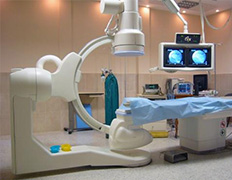Hair Transplant
Rana Hospital is a dedicated to Hair Transplant procedure also, providing the Latest 3rd Generation FUE Hair Transplant services. We are getting best results in North India with our ‘dense packing’
1. Follicular unit extraction (FUE, also known as the FOX Procedure) is the recent and widely discussed surgical procedures for hair restoration.
The FU is identified anatomically as a small bundle consisting of 1 to 4 hair follicles, full-thickness as well as fine hairs, and the oil glands, muscles and connecting tissue that accompany and support hair follicles. These little groupings of hairs are called follicular units (FUs). Identifying an individual FU can be difficult when follicles grow at angles under the skin .
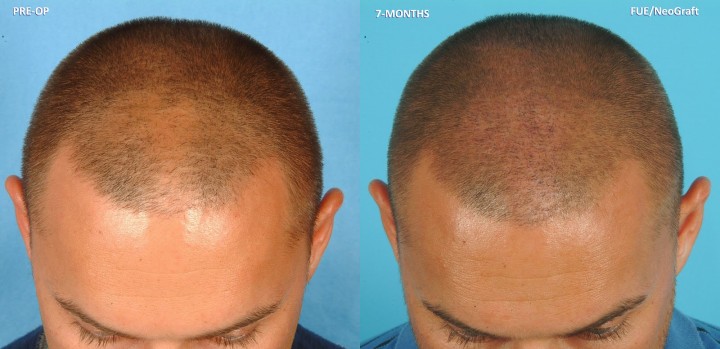
The identification of FUs is done by the hair restoration specialist using a microscope/ loop. The identification, harvesting and transplanting of FUs requires the training and skill of a specialist.
A recent development in surgical hair transplant surgery is to specifically use the FUs for transplantation. FUE is performed by using a punch-like “circular scalpel” to score the skin and mid-dermis to a level of about 2 millimeters around a follicular unit, then gently extracting the FU from within the scored circle.
Single follicular units are often used to fill in a hairline, multiple FUs to provide greater density in the center of the scalp. The FUs are transplanted into the scalp by inserting them into small slits incised into the skin and underlying tissue with a small blade or needle.
There has been debate regarding the scarring left at the donor site by harvest of FUs. Single-strip harvest leaves a single, fine incision that usually heals in a few days. Follicular unit extraction (FUE) leaves small holes 1 to 2 millimeters in diameter at the site of FU extraction. These holes are not stitched but are rather left to heal on their own. Proponents of the FUE procedure claim decreased or complete lack of scarring.
Follicular unit transplantation is a newer surgical technique that continues the modern emphasis on achieving a “natural” look from hair transplants. It is a technique that, like micro grafting, uses 1 to 4 units to achieve an even distribution of hair coverage over the scalp and avoid the “row of corn” appearance that was common many years ago.
2. Process of Surgery of FUE Hair Transplant
– On the day of Hair transplant surgery, please have a head bath and a heavy breakfast.
– We will click the pictures of you bald as well as the donor area.
– Then we trim and prepare the donor area from the back of the head.
– We make the patient lie down in prone position on the operating table. We then take utmost care to give local anesthesia with minimal discomfort in the donor area. The grafts are then extracted from the donor area with the help of 0.8 and 1 mm special micro punches. The extraction of follicles is done under magnification. The extracted grafts are then preserved in cool Ringer Lactate solution. Each follicle may be consisting of 1,2,3 or rarely 4 hairs.
– The position of the patient is changed to supine position. Then the recipient (bald) site is then prepared by giving local anesthesia. The slits are made with the help of special blades 0.8-1 mm in diameter and the extracted hair follicles are then implanted into this area.
– Implantation of the hair follicles is the most skilful and crucial step in FUE. The hair follicles containing single hair are implanted in the front to give a natural hairline and subsequently followed by units containing 2-3 hairs to give density to the area.
– During the procedure we give a tea as well as a lunch break so the patient should not feel tired during the surgery. In fact during the surgery, the patient keeps on chatting and discussing about himself or herself that we become “friends” with them.
– The transplanted area is covered with a loose cap. The patient is discharged to go on his own. He can go to the market, watch a movie or just do anything he wishes to do!
3. Pre-Op Instructions for Hair Transplant
In order to prepare for the procedure and seek maximum advantage from the overall technique, every FUE HAIR TRANSPLANT patient should adhere to instructions provided.
Some of the preoperative instructions provided to our FUE hair transplant patients include:
– On the day of scheduled surgery, patient should take a shower and wash the hair with regular shampoo thoroughly. Use of any type of hair spray or lotions should be avoided.
– Take a healthy breakfast in the morning of the surgery.
– For smokers, it is imperative to stop smoking a day before the surgery.
– Cessation of alcohol consumption at least 2 days before the surgery.
– Avoid wearing clothing that requires pulling over head for removal. A comfortable shirt with front buttons is recommended.
Medications
Following medications need to be taken:
– Tablet Augmentin (Antibiotic) – 3 times a day, for 4 days
– Tablet Combiflam (Pain Reliever) – 3 times a day, for 4 days
The medications are administered to reduce the discomfort that comes associated with swelling and pain after the procedure.
Blood Analysis is required for:
1)CBC (Complete Blood Counts)
2)BT, CT or PTI/INR
3) Viral Markers – Hepatitis B, hepatitis C, and HIV testing.
The patient should have received the results of requested tests at least two days prior to the surgery. The patients can choose to email the copy of the results to the clinic with final copy to be presented at the day of the surgery.
Request to the patients
The hair transplantation patients are requested to inform us about the intake of their regular medications if any. If they consume any kind of multivitamins, supplements for vitamin B or E, they will be required to stop these at least two weeks before and after the procedure. This is because their intake may interfere with their healing phase and bleeding as well. The patients should also stop using minoxidil two weeks prior to the surgery. Any type of anti-depressants, anti-coagulants, or beta blockers needs to be stopped. Intake of aspirin, herbal supplements, or anti-inflammatories should also be stopped a week prior to the procedure.
4. Surgery
Rana Hospital is a premier facility for patient care and FUE hair transplantation. We value our patients and take care of them in an utmost way. We offer courteous, professional, skilled, and knowledgeable services to provide our patients with the best care.
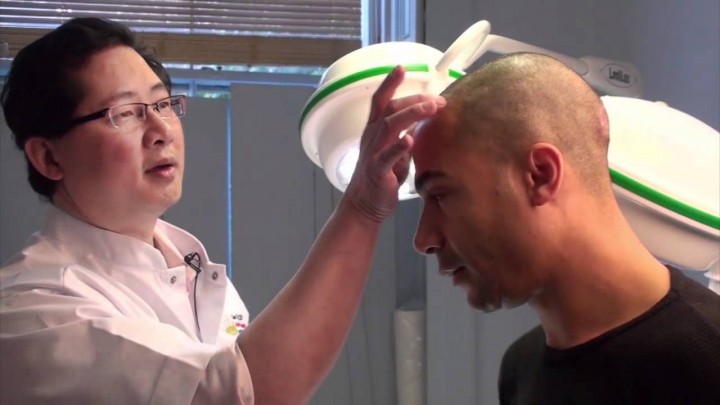
WHEN YOU ARRIVE
When you will arrive at our facility, you will be welcomed by one of our staff members. You will be required to fill out a basic form while Dr. Gurnaaz and his surgical assistants will prepare for the FUE hair transplant procedure. A technician will ensure that you have followed all the pre-operative instructions. You will be offered a mild-acting sedative, although it is very rarely needed. You will be then led to the operating area.
PROCEDURE REVIEW
Dr. Gurnaaz will outline the objectives of the procedure and will discuss with you the best possible use how they are going to make the best possible use of the donor hair. We give integral importance to the doctor-patient review at this stage. You ideas about the procedures and goals will be taken into consideration and suggestions will be provided to make the most of the hair restoration. We will not proceed with the procedure until you have understood and agreed to the surgeon’s idea about the process and how the procedure is aligned to meet your expectations.
REMOVAL OF FOLLICULAR UNIT
Local anesthesia is provided to the donor site. The anesthesia is given in order to ensure that the procedure can be carried in a pain-free manner. Once the anesthesia shows its effect, Dr. Gurnaaz will begin with removal of follicular units. The process will take nearly 4 hours depending upon the area to be considered. You will be lying down at ease on a comfortable table during the removal. After the completion of extraction process, the donor area will be dressed carefully by Dr. Gurnaaz.
BREAK & REFRESHMENTS
When the initial phase of the procedure is accomplished, you will be asked to use the washroom, if required and stretch your legs, if need be. You will be provided with refreshments from our staff members as our technicians will prepare the operating area for second phase of the procedure.
CREATION OF RECIPIENT SITE AND INSERTION OF GRAFTS
You will be comfortably seated on a reclining operating table for this phase. Dr. Gurnaaz will create recipient sites by making small incisions. The recipient sites will receive the donor hair. Creation of recipient site is done by making use of fine needles. The distribution and alignment of hair is taken into account. After the incisions have been made, Dr. Gurnaaz will begin with placement of extracted follicular units into the recipient area.
LUNCH
We provide the patient with lunch.
POSTOPERATIVE PACKAGE
We provide our patients with postoperative package. The package will consist of antibiotic medications, pain relievers, and needful things to ensure effective and smooth healing.
5. Post-Op Instructions for Hair Transplant
The Night After Procedure
The first night after the procedure is of utmost importance. It is important to avoid touching the grafts as this can make them fall out of the recently made incisions. It is advised to the patients to sleep in a semi-upright position. You can utilize 2 to 3 pillows for elevating your head. You will be recommended to sleep in this position for up to three nights after the surgery.
Instructions About Shampooing
For shampooing your hair, you need to wait at least 48 hours after the surgery. You will need to shampoo daily for at least one week to maintain good hygiene of the site. You can follow the instructions as below: – Replace your old shampoo with baby Johnson & Johnson shampoo in view of its mild effect and effective cleansing.
– You can dilute the shampoo by mixing it with water in a plastic container. Massage your hair and the grafted site with the help of your fingers.
– In order to rinse out, you need to pour water gently on the hair using a container. You can use to shower your head five days after the surgery.
You may see some white spots appearing at the roots of the grafts after washing your hair, which is due to the swelling at the grafts. Don’t worry; this will disappear after a span of 30-40 minutes.
Physical Activities
You need to avoid all types of physical activities after the procedure. This will include avoidance of leaning forward, blowing of the nose, lifting heavy objects, and indulging in vigorous sports. Sexual activity should also be avoided for seven days. Outdoor activities like swimming or jogging should be avoided as well.
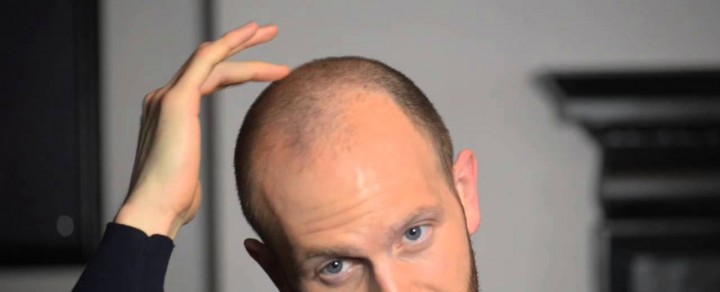
Potential complications
Swelling
You may encounter some swelling. You need not worry as this is normal. You may experience swelling of the forehead on the first, second, or third day after the surgery. This eventually resolves by the intake of prescribed medications. Applying ice packs near your forehead area can help provide relief. However, it is imperative that ice should not touch the grafted area. The patients are advised to take the medications for prescribed amount of time, even if there is no swelling.
Bleeding
You may see some bleeding occasionally. In order to deal with it, you can apply compression to the area of bleeding. You can use clean linen for the same. Using ice packs at the back of the scalp can also help. Bleeding stops within minutes of using these methods.
Pain/Discomfort
Some pain may be felt after the surgery, which is absolutely normal. The medications that have been prescribed help to provide relief from the pain. Pain is usually mild in nature and not intense.
Infection
In order to eliminate the chances of infected grafts or infected scar, you will be prescribed antibiotics. You should, however, stick to regular dosage. If you begin to notice any spots with local pain, heat, or redness, you should contact our helpline 09814128667 immediately.
Low sensitivity
You may feel decrease in the sensitivity in the recipient area. You need not worry about it. Sensitivity will be resorted over the next 4 to 12 months after the procedure.
Crusting
Crusting indicates healing phase. You will notice small crusts clinging to the hair grafts. You can use wet compresses for them. This will help them disappear. Majority of the crusts fall off in a span of 7 to 10 days. It is very important NOT TO PICK AT THE CRUSTS. With regular washing of the hair, these crusts will go away. After some period of time, you can gently massage the scalp before head bath to speed up the removal. At times, you will notice grafted hair falling off with these crusts. It is common. You need not worry about the hair growth as stem cells remain in the site to ensure growth.
MISCELLANEOUS
Growth of Hair
It is important to know that hair growth starts at least 3 to 4 months after the FUE HAIR TRANSPLANT surgery. Nearly 5 to 10% patients do not experience graft loss. At times the growth is slower where it may take up to 6 months for the beginning of the hair growth but that is normal too. The falling out of the grafts does not affect the overall growth of the hair.
Alcohol
Abstain from drinking alcohol at least 48 hours after the surgery.
Sunlight
When there is redness of the skin, it is recommended to avoid going out in the sun. If you need to go out, you must wear a cap after the surgery.
Minoxidil
You can use minoxidil a month after the surgery based on your requirements.
6. Hair Transplant Techniques
High Density Implantation – ‘Dense Packing’
The patient who suffer from nominal hair loss can also opt for “dense packing”, which is a thickening technique that can help them achieve natural looking very high density results.
Majority of men who are not bothered by loss of hair, have about 70 to 100 hair ‘grafts’ per square centimeter or about 150 to 240 hairs. During a personal consultation, the density of patient’s hair is gauzed by a special instrument called Densitometer.
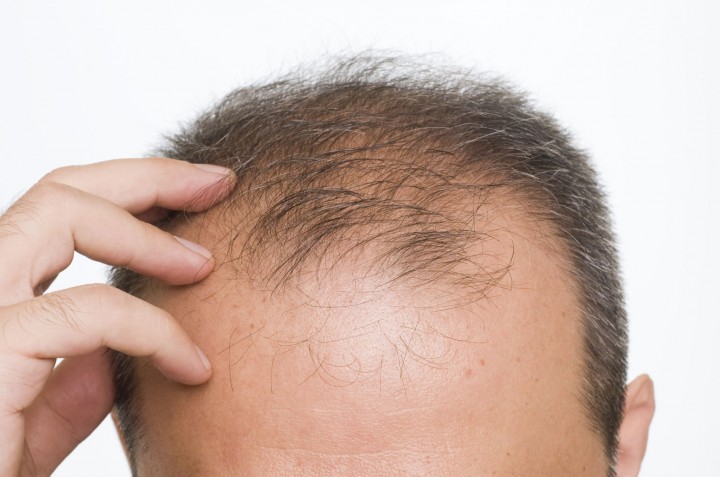
Depending on the degree of hair loss, we can work diligently to implant up to 100 to 120 hairs per square centimeter which refers to 40 to 50 ‘grafts’.
The density of patient’s hair is determined to a large extent by the following factors:
Color of hair
Diameter of hair shaft
Skin color
Hair Style
Curls
Rana Hospital is one of the very few hospitals in India which can take the proud of delivering consistent results pertaining to world-class quality by use of technique called ‘dense packing.
Higher density at the hairline
We strive to provide our patients best solution for their needs. Our endeavor is to achieve the highest possible density in the front part of the head. In order to gain good result, the front must have good coverage. As we always try to seek the best possible density for your scalp, we generally require more hair roots than what is normally recommended by other institutes.
The use of this technique not only offers great density to the transplanted hair, but also offers the patients completely natural appearance.
Mini instruments
To ensure we achieve the designated results, we make use of the smallest instruments available.
For the procedure, we use ‘lateral slit’ method which has been developed in Canada. This method has already received an award from the Annual Hair Transplant Conference in Vancouver.
The instruments that we use include 0.70 mm blades with adaptable length and angle for every patient.
7. Why Rana Hospital is preferred destination for for Hair Transplant
• We offer to provide you with absolute transparency at all levels of the procedure. All the grafts are given by counted.
• Dr. Gurnaaz has extensive experience in hair transplant procedures. Dr. Gurnaaz has high degree of proficiency in hair transplant procedures.
• Our technique is targeted to yield best results for you.
• We have a well trained, proficient, and experienced staff.
• We have a list of satisfied customers from all across the globe.
• We are committed to provide our clients with a friendly, warm, and satisfied experience.
Hair Transplant Cost
When you are on the look to discover the cost of hair transplant procedure, it is best to decide on the hair transplant center where you wish to undergo the procedure:
Speed
Our qualified doctors extract more than 600-700 grafts per hour; which is one of the maximum in the world. You can take advantage of our mega sessions which can provide you with 4000 grafts in one day.
Extraction of Grafts
Follicular transaction rate (FTR) makes follicular unit extraction (FUE) technically hard with the higher frequency of cutting of hair roots while extracting grafts. It can cause permanent loss of hair. The generally established FTR is around 20-30% at various transplant centers. This refers to the fact that nearly 400 to 600 grafts get wasted with every 2000 grafts transplant. However, our proficient doctors have achieved an FTR below 5%, which makes Kyra Clinic- the best in India. So, you actually spend 20%-25% less and you also save your precious hair.
Counting of Grafts
At Rana Hospital, we value the satisfaction of our patients. All our hair transplant patients are given grafts by counting to ensure transparency of the procedure to them. This is in contrast to many other transplant centers, where patient lose nearly 25-30% money just because of the uncounted grafts given for transplant.
Hair Follicle Vs. Graft
There are several hair transplant surgeons who charge the cost of hair transplantation on the basis of per hair. Here at Rana Hospital, we value our customers and help them seek ways for best value for money. This is the reason why we charge on the basis of each hair follicular unit, FU. (One follicular unit consists of one to four hair. So, on an average two hair per follicle).
Body Hair Transplant
Except the hair on scalp, our dedicated doctors have extensive experience in restoring hair in eyebrows, chest, moustache, beard, etc.
Stable Team
Our strength lies in our team. Unlike other hair transplant centers with on call staff, our stable team acts as our backbone. Our permanent team comprises of more than 10 members who work persistently before, during, and after the surgery to ensure excellent results.
Our Expertise in Medical Services
Rana Hospital was started with a dream of providing the best facilities for Piles, Fissures, Fistula and all Anorectal problems.

Mon to Sat:
8:30 AM – 1:30 PM
4:00 PM – 6:30 PM
Mon to Sat:
9:00 AM – 1:30 PM
4:00 PM – 6:30 PM
Make an Appointment
 Accreditation & Awards
Accreditation & Awards
The Hospital organized a free checkup camp for PILES on 24th October 2013 in which 717 patients from all over India were examined. It was followed by one day free operation camp on 27th October 2013. Dr Suri single-handedly performed 391 free surgeries in 8 hours & 45 minutes setting a World Record.




